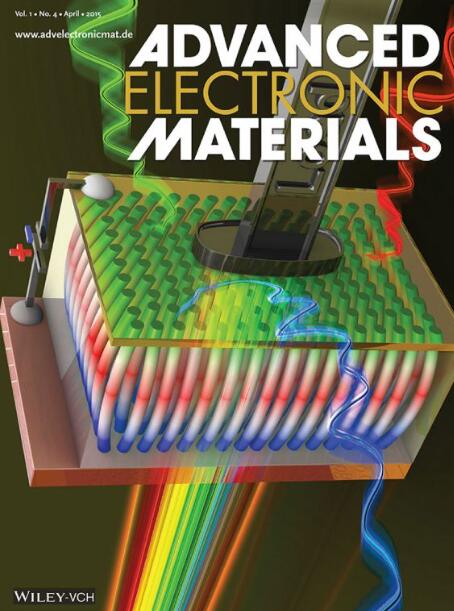Understanding the Interplay Between Thermal Activation, Diffusion, and Phase Segregation of Molecular Dopants Blended with Polymeric Semiconductors
IF 5.3
2区 材料科学
Q2 MATERIALS SCIENCE, MULTIDISCIPLINARY
引用次数: 0
Abstract
Molecular doping of polymeric semiconductors is a key strategy to tune charge transport properties, energy levels alignment and charge injection in printed electronic devices. N-type doping is more challenging than p-type due to the characteristic energy levels of performing polymers requiring the development of oxygen sensitive dopants. Precursor dopants are kinetically stable compounds that cannot directly dope the target semiconductor but can be converted in situ via thermal activation into the real doping species. 1,3-Dimethyl-2-(4-(dimethylamino)phenyl)-2,4-dihydro-1H-benzoimidazole (N-DMBI-H) is the most widely employed example. While in blend with the polymeric semiconductor, the thermal activation of DMBI-H like molecules does not exclusively lead to doping but also causes diffusion and phase segregation of both the dopant itself and the various possible by-products of the doping cascade. All such processes have profound impact on the morphology, microstructure and charge transport properties of the blend. In this paper, we compare different DMBI-H derivatives with comparable thermodynamic doping capability over the benchmark polymer poly{[N,N′-bis(2-octyldodecyl)-naphthalene-1,4,5,8-bis(dicarboximide)-2,6-diyl]-alt-5,5′-(2,2′-bithiophene)} (P(NDI2OD-T2)) and we show how the phase segregation process is the main responsible for their different performances and dopant design can help enhance intermolecular interactions and reduce phase segregation.

了解与聚合物半导体混合的分子掺杂剂的热活化、扩散和相分离之间的相互作用
聚合物半导体的分子掺杂是调整印刷电子器件中电荷输运特性、能级排列和电荷注入的关键策略。n型掺杂比p型掺杂更具挑战性,因为性能聚合物的特征能级需要开发氧敏感掺杂剂。前驱体掺杂剂是一种动力学稳定的化合物,它不能直接掺杂到目标半导体上,但可以通过热活化在原位转化为真正的掺杂物质。1,3-二甲基-2-(4-(二甲氨基)苯基)-2,4-二氢- 1h -苯并咪唑(N-DMBI-H)是应用最广泛的例子。当与聚合物半导体共混时,DMBI-H类分子的热活化不仅会导致掺杂,还会导致掺杂剂本身和掺杂级联的各种可能的副产物的扩散和相分离。这些过程都对共混物的形貌、微观结构和电荷输运性能产生了深远的影响。在本文中,我们比较了不同的DMBI-H衍生物在基准聚合物{[N,N ' -双(2-辛基十二烷基)-萘-1,4,5,8-双(二碳酰亚胺)-2,6-二基]-al -5,5 ' -(2,2 ' -双噻吩)}(P(NDI2OD-T2))上具有相当的热力学掺杂能力,并展示了相分离过程是它们不同性能的主要原因,以及掺杂剂设计可以帮助增强分子间相互作用和减少相分离。
本文章由计算机程序翻译,如有差异,请以英文原文为准。
求助全文
约1分钟内获得全文
求助全文
来源期刊

Advanced Electronic Materials
NANOSCIENCE & NANOTECHNOLOGYMATERIALS SCIE-MATERIALS SCIENCE, MULTIDISCIPLINARY
CiteScore
11.00
自引率
3.20%
发文量
433
期刊介绍:
Advanced Electronic Materials is an interdisciplinary forum for peer-reviewed, high-quality, high-impact research in the fields of materials science, physics, and engineering of electronic and magnetic materials. It includes research on physics and physical properties of electronic and magnetic materials, spintronics, electronics, device physics and engineering, micro- and nano-electromechanical systems, and organic electronics, in addition to fundamental research.
 求助内容:
求助内容: 应助结果提醒方式:
应助结果提醒方式:


